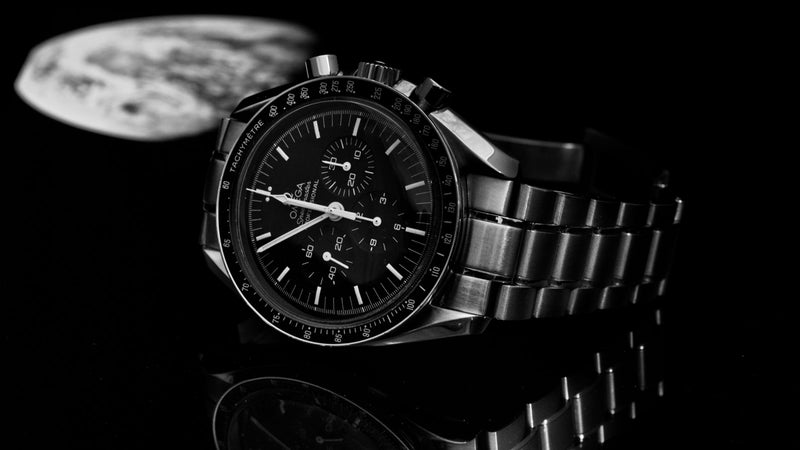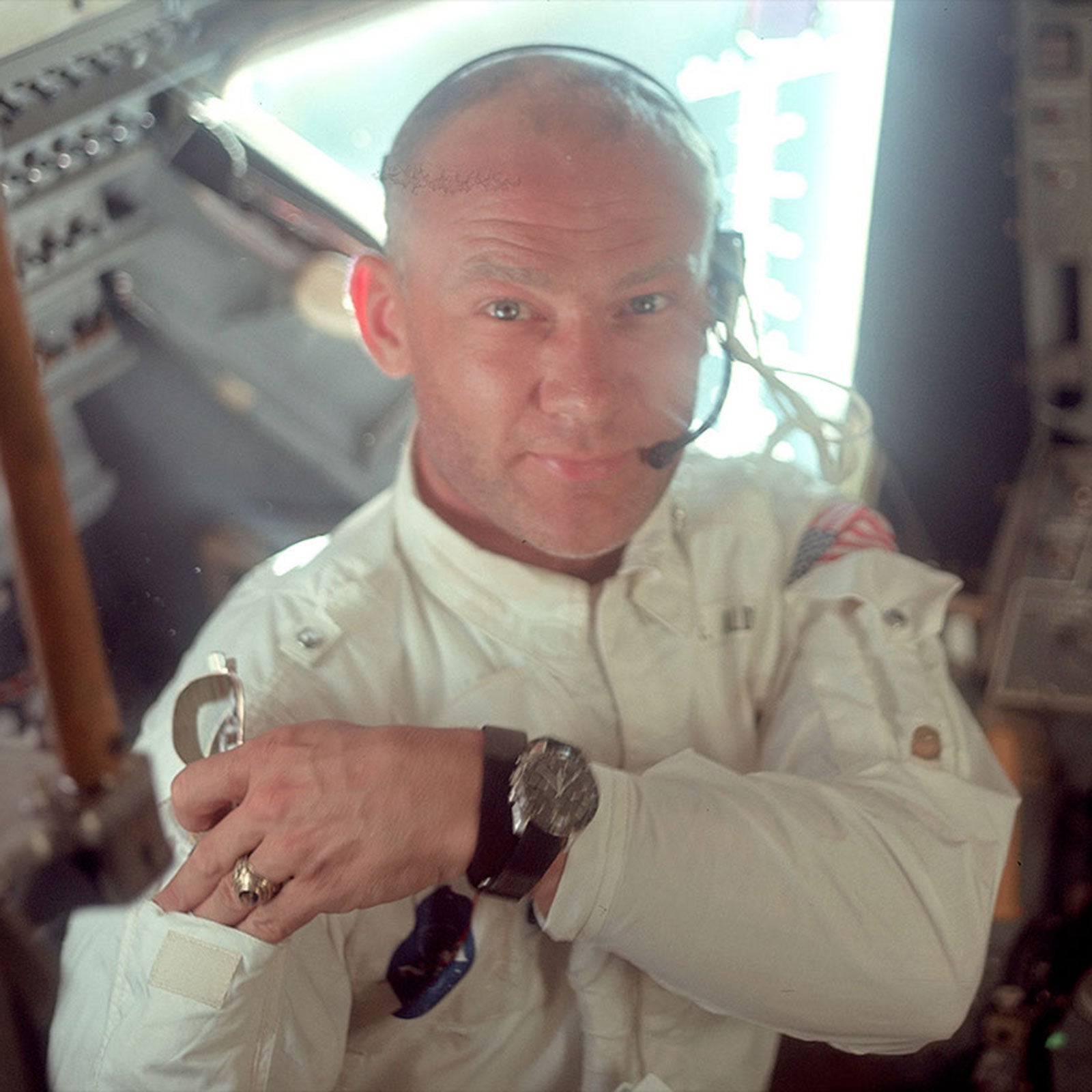On July 21, 1969, Captain Buzz Aldrin descended the ladder of Eagle, the Apollo 11 Lunar Excursion Module (LEM), and became the second person to walk on the surface of the moon. Strapped to the outside of his space-suit sleeve with a long nylon Velcro band was an , thus becoming the first wristwatch on our own celestial pet rock and securing the greatest marketing hook in history.
Fifty years later, Omega is still capitalizing on the SpeedmasterÔÇÖs lunar provenance, with annual limited editions, tributes, and events where it┬áparades octogenarian astronauts onstage alongside George Clooney. But itÔÇÖs not mere fluff. The hand-wound mechanical watch is still the only watch NASA approves for EVA, or extra-vehicular activity. Its celebrity was also entirely organic and hard-won through a brutal selection process that eliminated other prominent brands from the running. For these reasons, the ÔÇťSpeedyÔÇŁ retains a reputation as an honest timepiece in a field swollen by marketing hyperbole and high prices.
The SpeedmasterÔÇÖs story begins back in the late 1950s, when Omega, looking to capitalize on the growing interest in motor sports, released a stark, oversized chronograph (a watch with a stopwatch function) with a tachymeter scale on the outer ring for timing laps on a racetrack. It was immediately popular with racing fans and gearheads alike. One of those fans was , a hotshot test pilot, who showed up for the Mercury astronaut selection in an Austin-Healey roadster and with a Speedmaster on his wrist.

When Schirra blasted off into earthÔÇÖs orbit in 1962, his personal Omega went with him (John Glenn wore a TAG┬áHeuer, Scott Carpenter a Breitling). By 1965, NASA decided it needed to find a standard watch for all manned spaceflight and called in a handful of candidates, from Longines and Omega to Rolex and Wittnauer. After a battery of tests that tested the watchesÔÇÖ┬áresilience to┬ásevere vibration, cold, heat,┬áand acceleration, the agency┬áselected the┬áOmega Speedmaster. Later that year, when Ed White became the first American to venture outside a capsule and walk in space, he did so with┬áthe Speedy on his wrist, a photo of which made its way into Omega magazine ads.
In the late sixties, all things space were the rage, a hype only hinted at this summer with the lead-up to the 50th anniversary of the Apollo 11 moon landing. Like drinking Tang, wearing a Speedmaster was one of the few tangible ways a space nerd could emulate their astronaut heroes. It continued to sell well┬áeven after the Apollo program ended, space exploits faded from public attention, and digital quartz watches replaced mechanicals on most wrists. Because NASA recertified the Speedmaster for use on space-shuttle missions in the seventies, Omega didnÔÇÖt dare meddle with it, keeping it exactly as it was in 1957.┬á
The SpeedmasterÔÇÖs extraterrestrial mettle also made it a suitable adventure companion on earth. In 1968, the first expedition to undisputedly reach the North Pole by surface means was timed by the Speedmaster. And as late as 1990, wore one when he crossed Antarctica on foot.
ThereÔÇÖs something poignant about the fact that even today, as Elon Musk is sending Teslas into space and NASA is aiming for Mars, there remains a quaint remnant of a more seat-of-the-pants era: a watch that has to be wound by hand┬áand that times engine burns and EVAs with a gear train driven by a tightly coiled spring.
And it may still be useful. The reason Neil ArmstrongÔÇÖs Speedmaster wasnÔÇÖt the first on the moon was because he left it in the LEM as a fail-safe backup to a glitchy electronic onboard timer.


